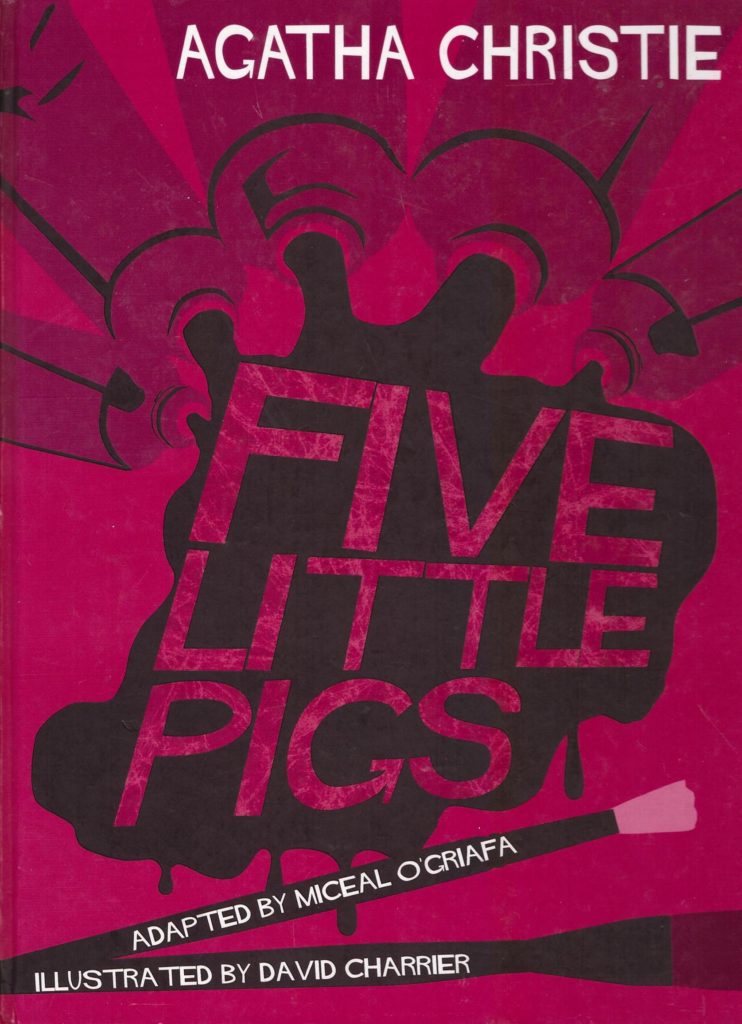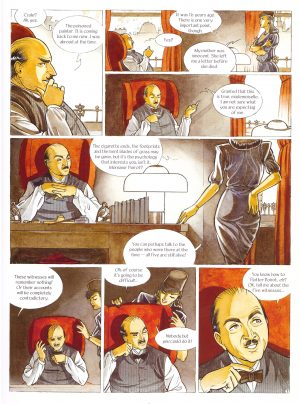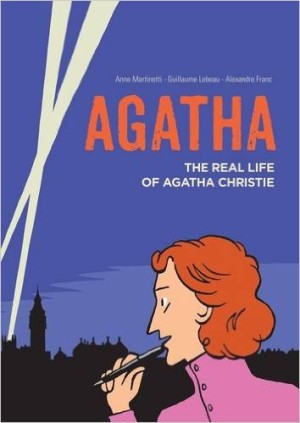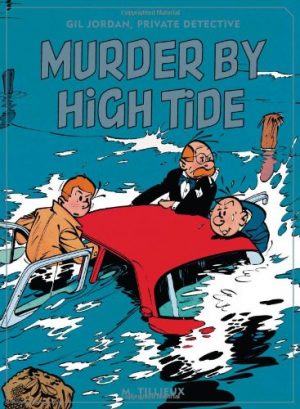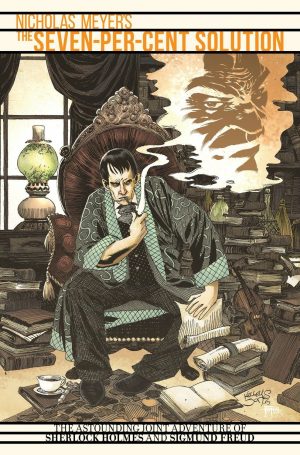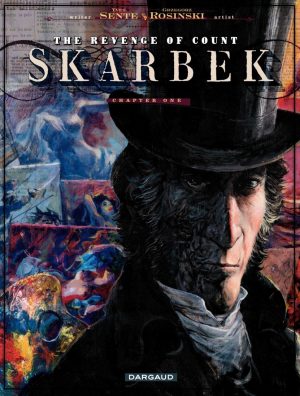Review by Ian Keogh
When Agatha Christie wrote her 21st Hercule Poirot novel she was in the midst of an exceptionally prolific five years that had seen her diversify again to other characters, including a second Miss Marple novel a decade after the first, and produce two of the best known Poirot stories. It’s all by way of establishing that 1942’s Five Little Pigs is from a golden period.
Poirot is hired by a young woman to investigate her father’s murder. He was a respected painter, and the wife he was about to leave was convicted for the crime, offering no defence in court and dying in jail. Now of age after being sent to Canada to grow up with relatives, Carla Crale believes her mother innocent and wants to learn the truth, and the challenge of finding it after sixteen years appeals to Poirot’s ego. It requires interviewing five people whose memories are contradictory, and one of them may be the real murderer.
Christie’s original novel is a finely crafted piece. She ensures all her characters are strong, but very different, some deliberately conceived as unsympathetic, others representing the British upper classes of the 1930s. An awkwardness characterises the dialogue over the first scene, but that’s avoided as Five Little Pigs continues, Miceal O’Griafa bringing out the assortment of personalities from the callous to the indifferent. He lets the contradictions in their conversations pass without comment, and only rarely has Poirot highlighting anything. Most importantly, he ensures we suspect each of them has a possible motive for being a killer.
What makes this version of Five Little Pigs an underwhelming read is dull art. David Charrier is very good at faces, which is just as well because a detective mystery story is of necessity going to feature prolonged talking sequences. However, he applies little imagination to them. As seen by the sample page, the viewpoint rarely changes and Charrier avoids pulling it out beyond head and torso views wherever possible. Even beyond that, too many details are fudged. The liver spots are interesting on the elderly in the present day, but Charrier’s clothes constantly draw the eye for the shading used on how they hang, and many people have a posed stiffness.
The purpose of any detective story is to have the readers pick up the clues with the protagonist, and this adaptation preserves that essence, although anyone who solves the mystery is a genius to be compared with Poirot. Some misconceptions and deceptions can be ascertained, but surely no-one will piece everything together despite O’Griafa presenting the entire picture in passing. Almost a quarter of the page count is given to Poirot’s explanation, which is a the customary Christie tour de force, featuring false accusations, red herrings and angry denials, but by then many will have lost interest.
